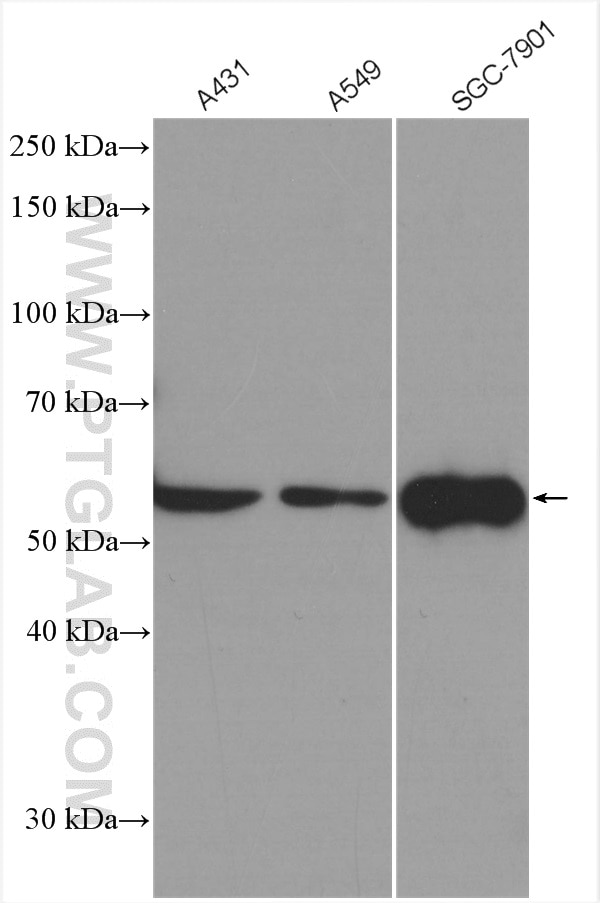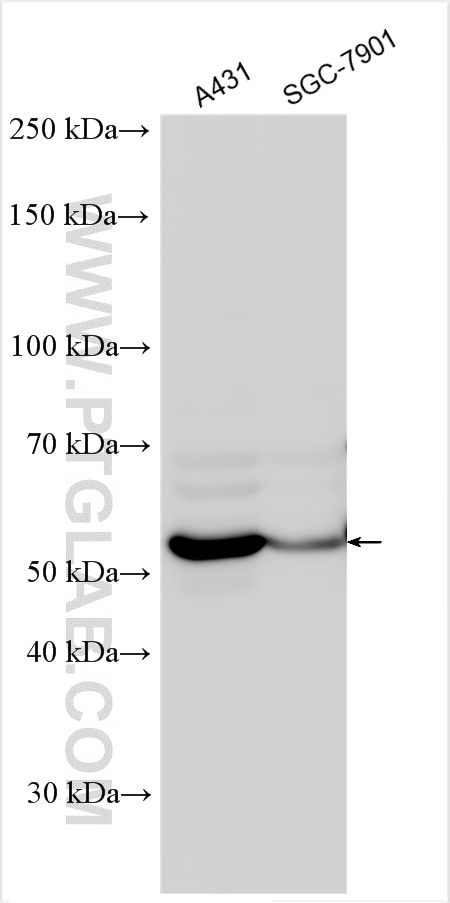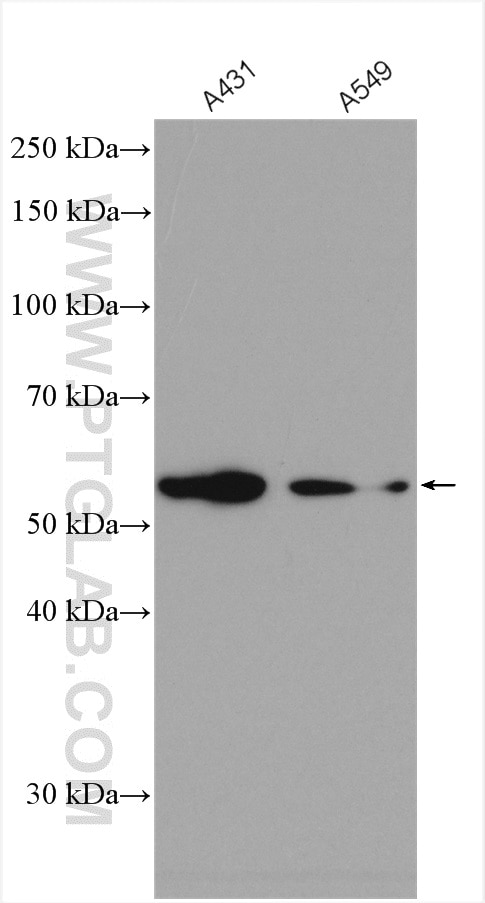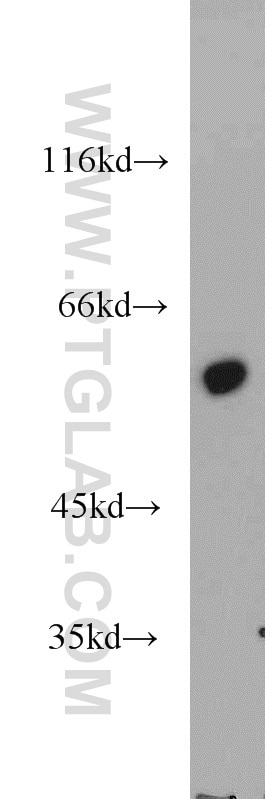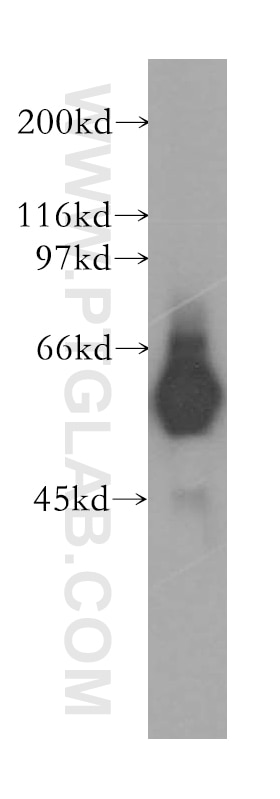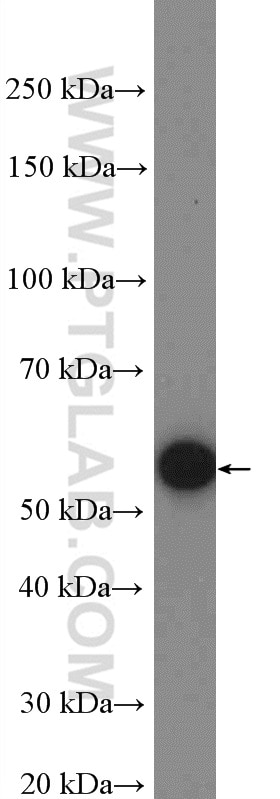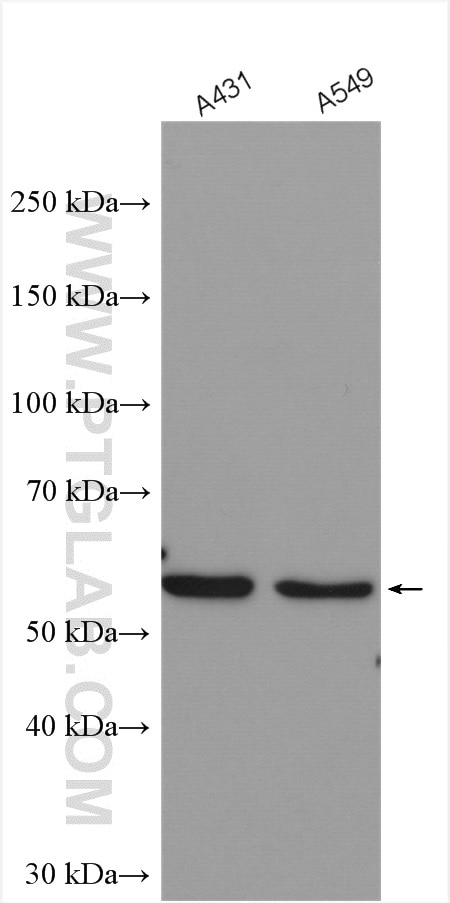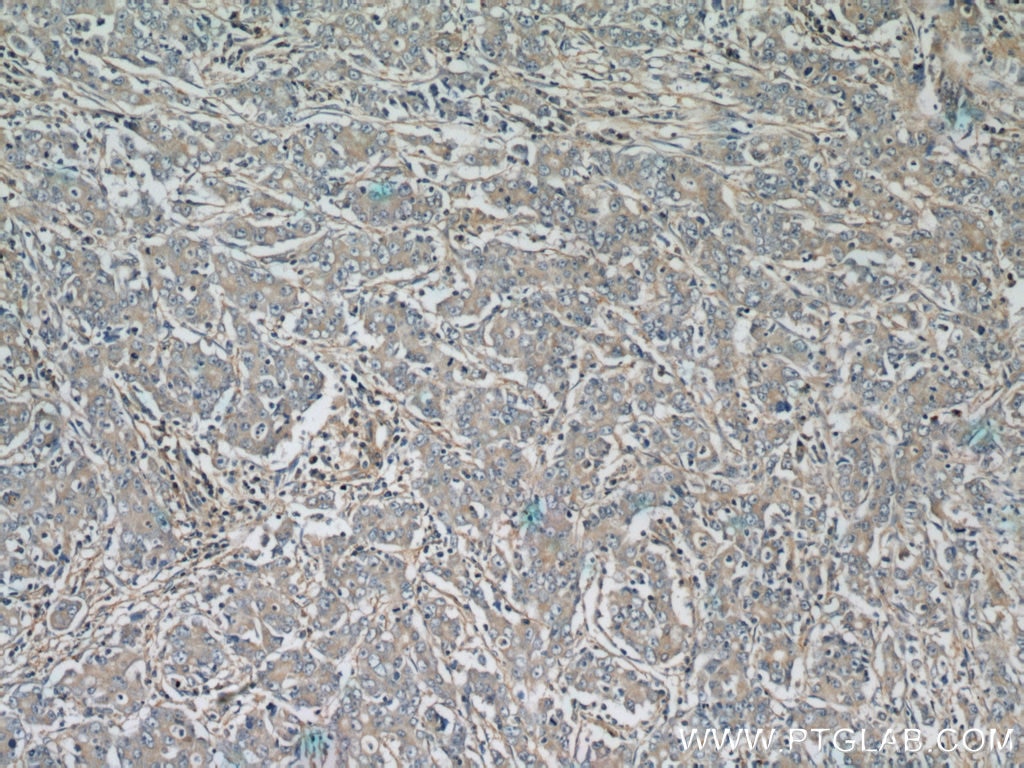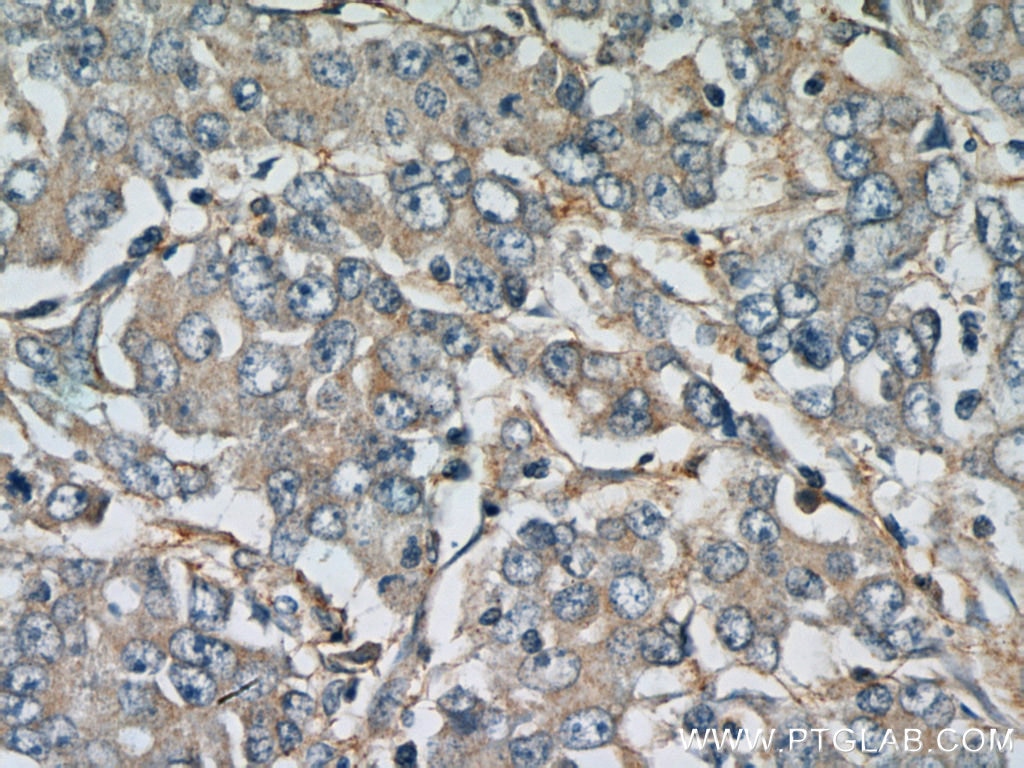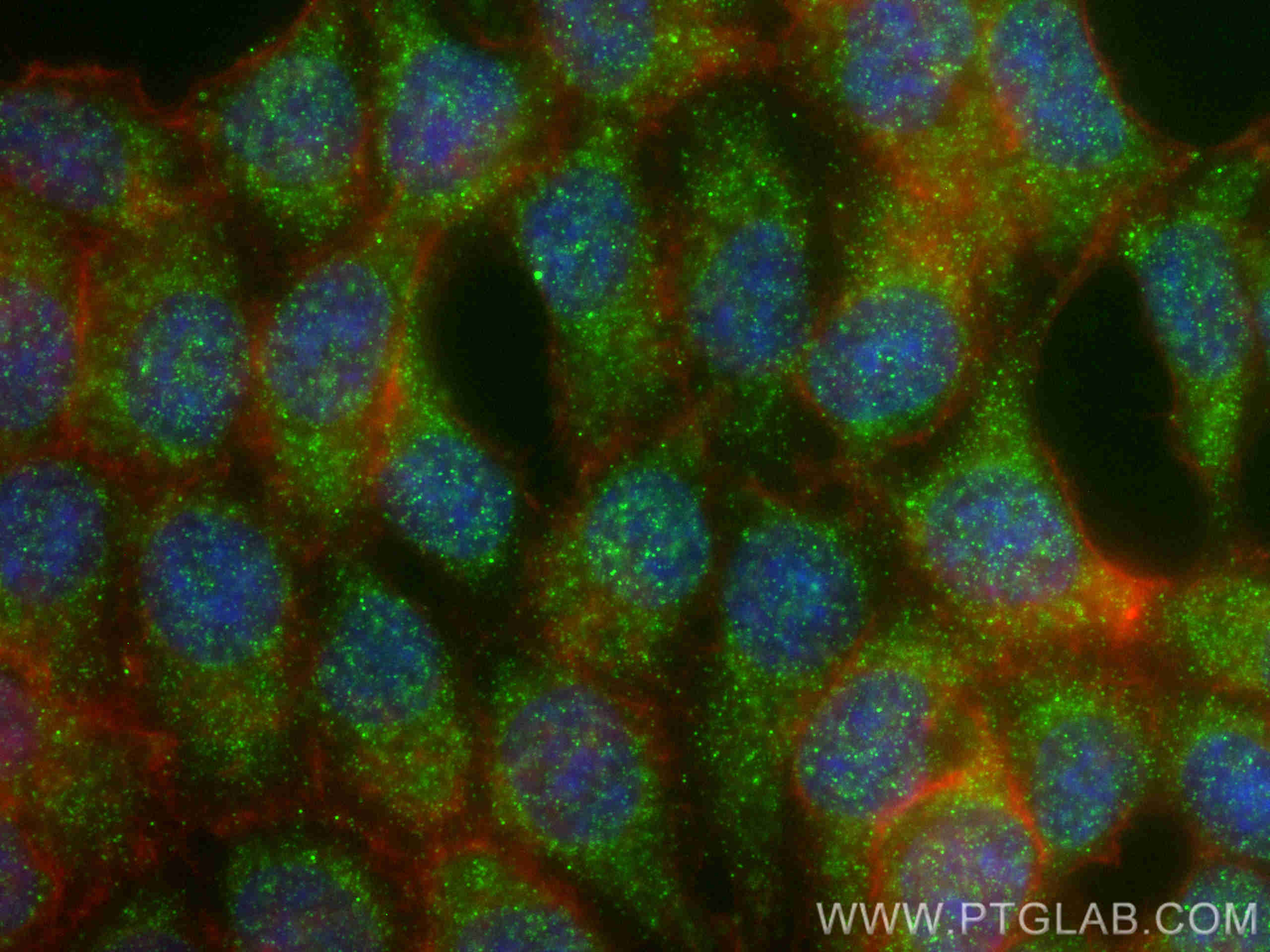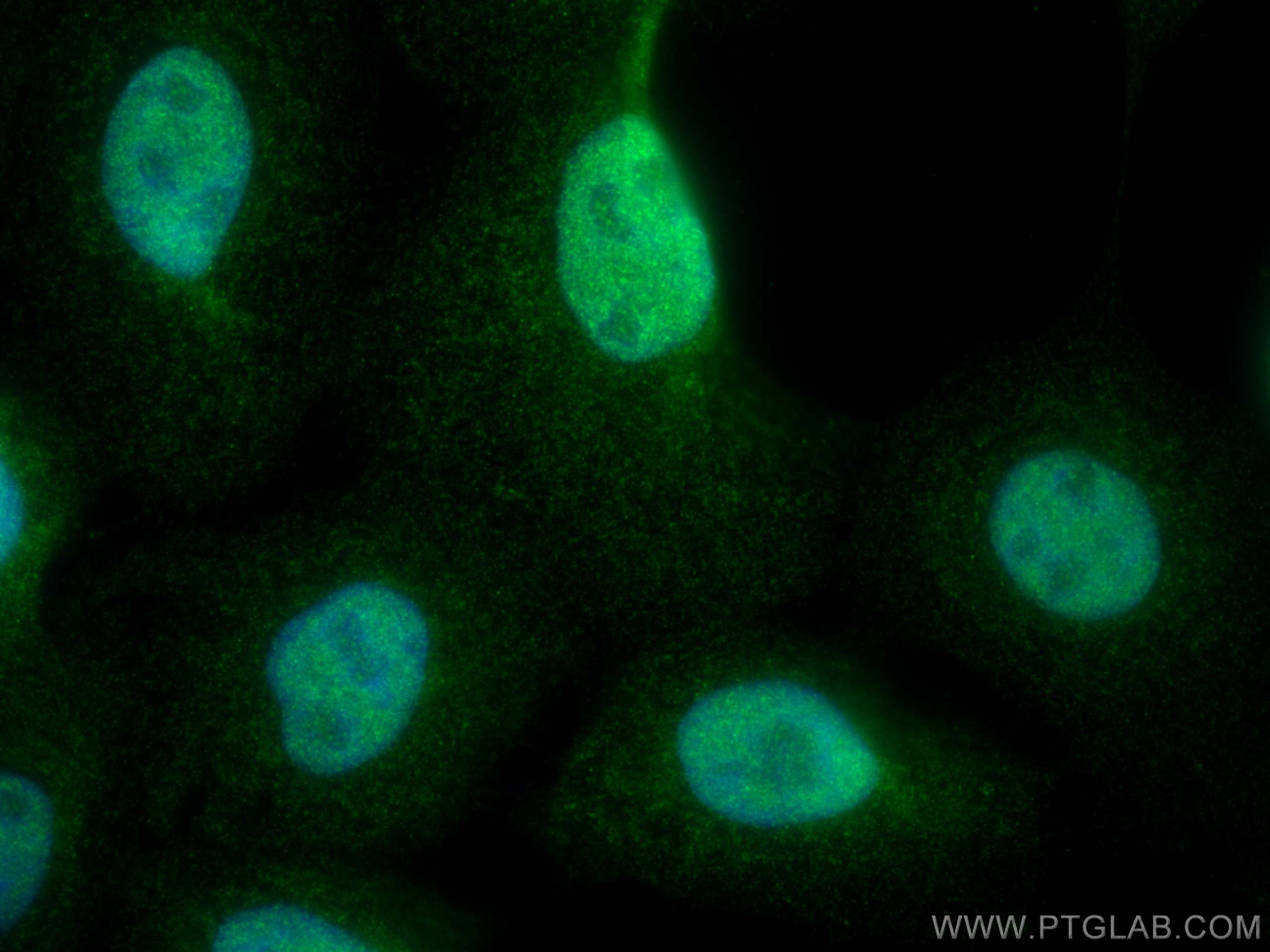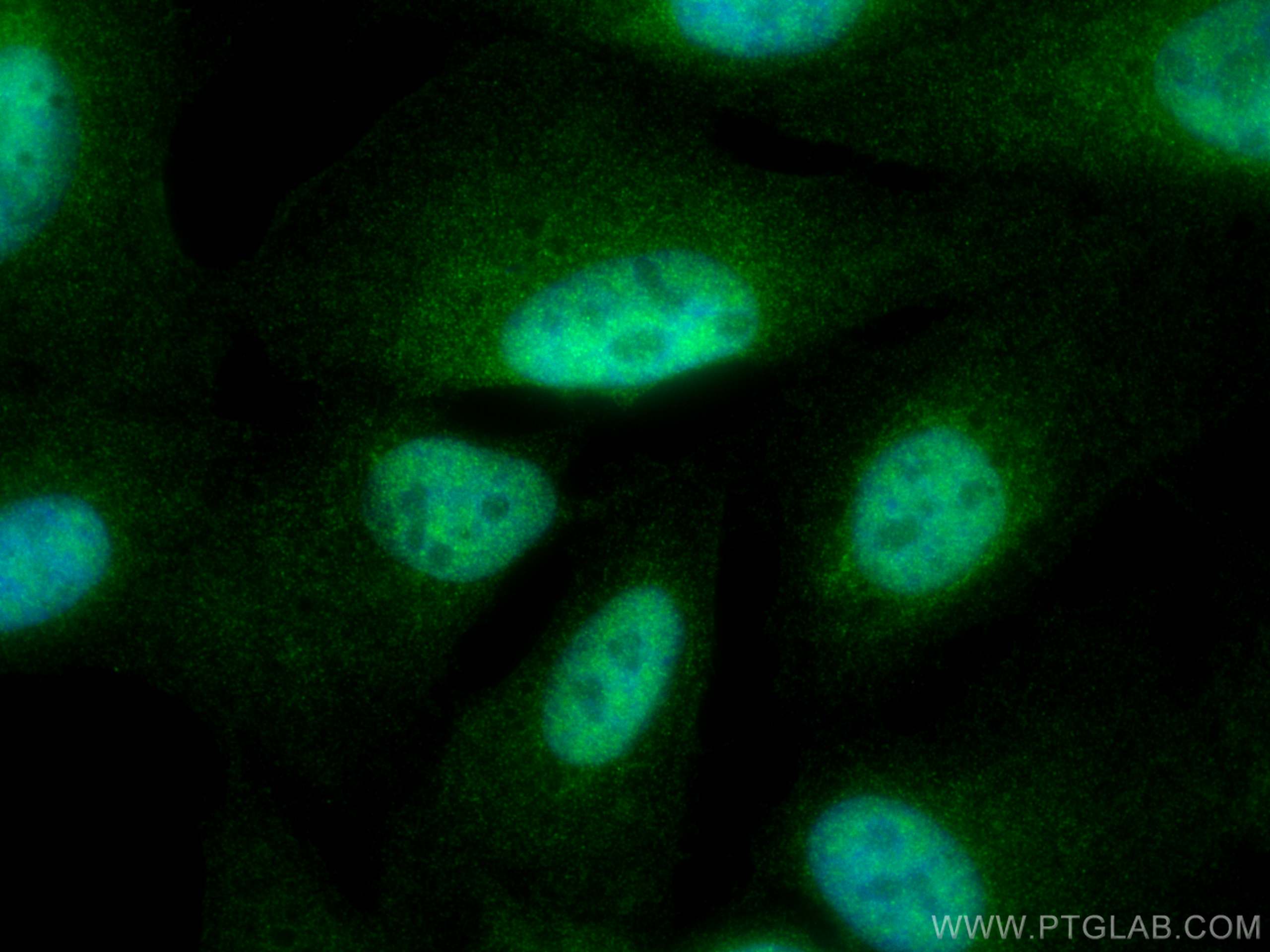- Phare
- Validé par KD/KO
Anticorps Polyclonal de lapin anti-FBXW11
FBXW11 Polyclonal Antibody for WB, IHC, IF/ICC, ELISA
Hôte / Isotype
Lapin / IgG
Réactivité testée
Humain
Applications
WB, IHC, IF/ICC, IP, ELISA
Conjugaison
Non conjugué
N° de cat : 13149-1-AP
Synonymes
Galerie de données de validation
Applications testées
| Résultats positifs en WB | cellules A431, cellules A549, cellules SGC-7901, tissu d'estomac humain |
| Résultats positifs en IHC | tissu de cancer de l'estomac humain il est suggéré de démasquer l'antigène avec un tampon de TE buffer pH 9.0; (*) À défaut, 'le démasquage de l'antigène peut être 'effectué avec un tampon citrate pH 6,0. |
| Résultats positifs en IF/ICC | cellules HCT 116, cellules A431, cellules U2OS |
Dilution recommandée
| Application | Dilution |
|---|---|
| Western Blot (WB) | WB : 1:500-1:2000 |
| Immunohistochimie (IHC) | IHC : 1:50-1:500 |
| Immunofluorescence (IF)/ICC | IF/ICC : 1:200-1:800 |
| It is recommended that this reagent should be titrated in each testing system to obtain optimal results. | |
| Sample-dependent, check data in validation data gallery | |
Applications publiées
| KD/KO | See 1 publications below |
| WB | See 15 publications below |
| IHC | See 3 publications below |
| IF | See 2 publications below |
| IP | See 1 publications below |
Informations sur le produit
13149-1-AP cible FBXW11 dans les applications de WB, IHC, IF/ICC, IP, ELISA et montre une réactivité avec des échantillons Humain
| Réactivité | Humain |
| Réactivité citée | Humain |
| Hôte / Isotype | Lapin / IgG |
| Clonalité | Polyclonal |
| Type | Anticorps |
| Immunogène | FBXW11 Protéine recombinante Ag3761 |
| Nom complet | F-box and WD repeat domain containing 11 |
| Masse moléculaire calculée | 542 aa, 61 kDa |
| Poids moléculaire observé | 61 kDa |
| Numéro d’acquisition GenBank | BC026213 |
| Symbole du gène | FBXW11 |
| Identification du gène (NCBI) | 23291 |
| Conjugaison | Non conjugué |
| Forme | Liquide |
| Méthode de purification | Purification par affinité contre l'antigène |
| Tampon de stockage | PBS with 0.02% sodium azide and 50% glycerol |
| Conditions de stockage | Stocker à -20°C. Stable pendant un an après l'expédition. L'aliquotage n'est pas nécessaire pour le stockage à -20oC Les 20ul contiennent 0,1% de BSA. |
Informations générales
FBXW11 (also known as HOS or β-TrCP2) is a member of F-box family proteins and plays critical role in regulating the ubiquitination of phosphorylated substrates. Abnormal expression of several FBXW11 is involved in the modulation of various biological events, such as cell cycle, differentiation, migration, inflammation, and apoptosis, through targeting multiple different substrates. For instance, FBXW11 could bind to the phosphorylated IκB and β-catenin, promoting their degradation via the ubiquitin-proteasome system. In addition, FBXW11 expression is markedly increased in mouse skin tumors and promotes tumor growth by activating the NF-κB signaling (PMID: 33640602). FBXW11 has 3 isoforms with the molecular mass of 58-62 kDa.
Protocole
| Product Specific Protocols | |
|---|---|
| WB protocol for FBXW11 antibody 13149-1-AP | Download protocol |
| IHC protocol for FBXW11 antibody 13149-1-AP | Download protocol |
| IF protocol for FBXW11 antibody 13149-1-AP | Download protocol |
| Standard Protocols | |
|---|---|
| Click here to view our Standard Protocols |
Publications
| Species | Application | Title |
|---|---|---|
Nat Commun The β-TrCP-FBXW2-SKP2 axis regulates lung cancer cell growth with FBXW2 acting as a tumour suppressor. | ||
Cell Death Differ NUMB facilitates autophagy initiation through targeting SCFβ-TrCP2 complex. | ||
EMBO J The E3 ubiquitin ligase APC/CCdh1 degrades MCPH1 after MCPH1-βTrCP2-Cdc25A-mediated mitotic entry to ensure neurogenesis. | ||
Antioxidants (Basel) AMPK-Mediated Phosphorylation of Nrf2 at S374/S408/S433 Favors Its βTrCP2-Mediated Degradation in KEAP1-Deficient Cells | ||
Front Oncol uc.77- Downregulation Promotes Colorectal Cancer Cell Proliferation by Inhibiting FBXW8-Mediated CDK4 Protein Degradation. |
